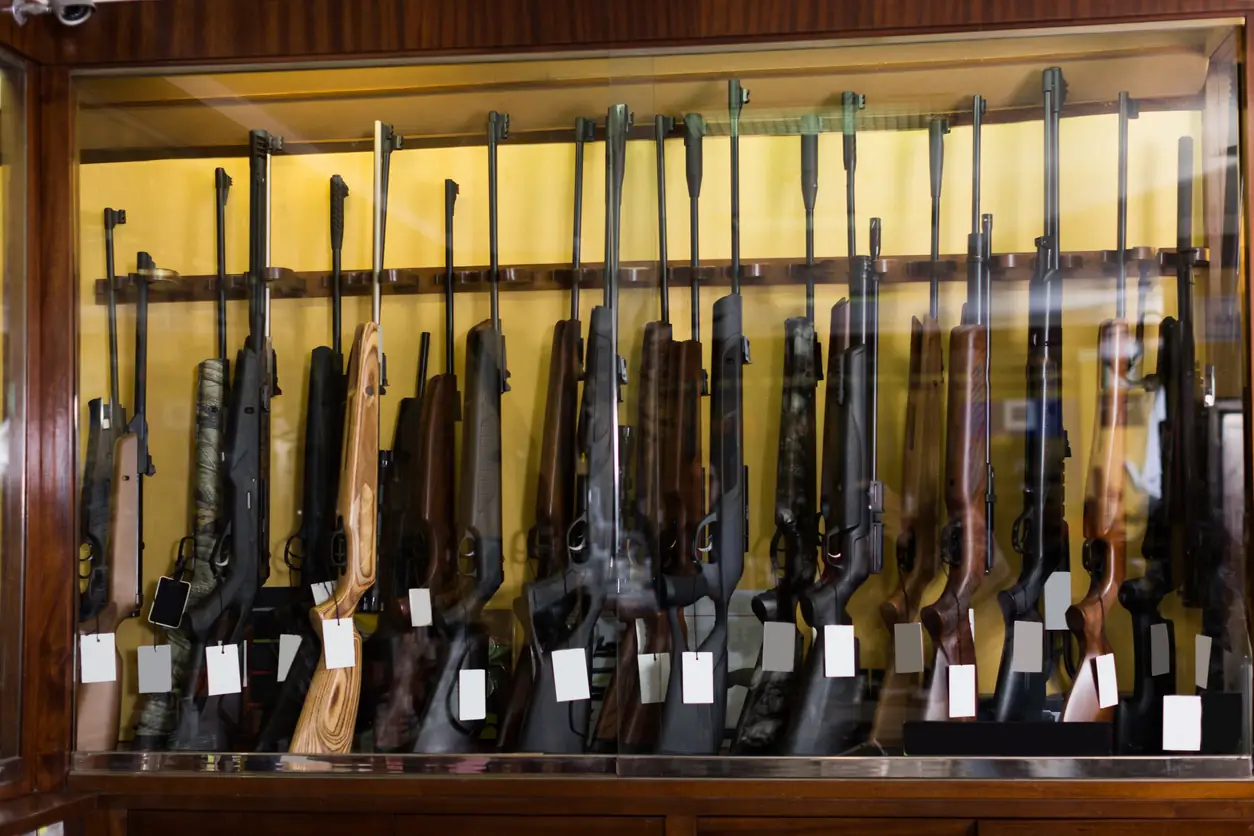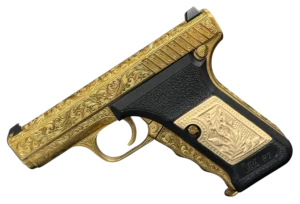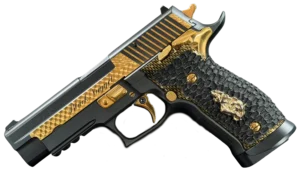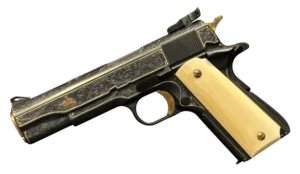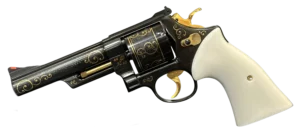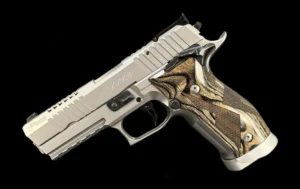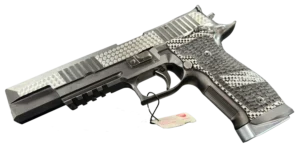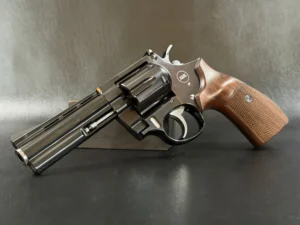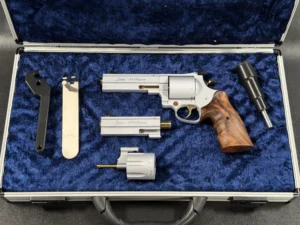Key Takeaways:
- Environment Control Isn’t Negotiable; It’s Everything: Honestly, you can have the most expensive safe money can buy, but if you’re not controlling humidity and temperature, you’re still losing the game. Keep the humidity between 30% and 50% relative humidity. Stay consistent with temperature (ideally 60°F to 70°F). Wild swings create condensation, and condensation is your collection’s worst enemy. A $100 dehumidifier and a $15 hygrometer can protect thousands—sometimes millions—in value. It’s not exciting, but it’s the difference between preservation and deterioration.
- Regular Inspections Catch Problems Before They Become Expensive: Here’s the thing: damage doesn’t happen overnight, but if you’re only checking your collection once a year, you might as well not be checking at all. Monthly quick checks (five minutes, seriously), quarterly hands-on inspections, and annual deep maintenance. That’s the rhythm. You’ll catch surface rust when it’s a $5 fix instead of a $1,000 restoration. Think of it like this—prevention is cheap, crisis management is expensive.
- Storage Quality Reflects Collection Value: You wouldn’t store a Picasso in a cardboard box, right? The same principle applies here. Quality safe (proper fire rating, thick steel, reliable locks), individual storage for each piece (no metal-on-metal contact), and preparation matters (light oil, VCI bags for high-value items). Budget collectors and serious investors face the same basic physics—moisture, contact damage, and environmental changes don’t care what you paid. The difference is understanding that proper storage isn’t an expense; it’s insurance that actually pays dividends.
You know what’s funny? Most people who invest thousands, sometimes millions, in art, sculptures, and rare collectibles will spare no expense on climate-controlled galleries and specialized display cases. But when it comes to their equally valuable firearm collection? They’ll toss it in any old safe and call it a day.
Here’s the thing: if you’re treating your firearms like tools in a garage rather than the precision-engineered pieces they are, you’re doing it wrong. Whether you’ve got a vintage Purdey shotgun worth more than a luxury sedan or a collection of historically significant military rifles, proper storage isn’t just about security. It’s about preservation, maintaining value, and, honestly, respecting the craftsmanship.
Let me explain why this matters more than you might think.
Why Storage Actually Matters (Beyond the Obvious)
Sure, everyone knows you need to lock up firearms. That’s Security 101. But there’s a massive difference between storing something safely and storing it properly. Think about it like this: you wouldn’t store a Monet in your basement next to the water heater, right? The same principle applies here.
Firearms are complex mechanical devices with metal components that react to their environment. Wood stocks can warp. Metal can corrode. Finishes can deteriorate. And once that damage happens? You’re looking at significant value loss or, worse, mechanical failure when you actually need the piece to function.
I’ve seen collectors lose tens of thousands in value because they didn’t understand this fundamental concept. One guy I know had a pristine Winchester Model 70 from the 1950s, beautiful pre-’64 action, original finish, the works. He stored it in a standard safe in his Florida garage. Three years later, the humidity had done its job. Surface rust, pitting on the barrel, and moisture damage to the stock. What was once a $3,000 rifle became worth maybe $800.
That’s not just unfortunate. It’s preventable.
The Foundation: Choosing the Right Storage Solution
Let’s talk about where your firearms actually live. And no, that gun rack on the wall doesn’t count unless you’re running a Western-themed restaurant and it’s a non-functional replica.
Safes Aren’t All Created Equal
The market’s flooded with “gun safes” that range from $200 sheet metal boxes to $10,000 fortress-grade vaults. What’s the difference? Everything that matters is pretty much.
First, consider fire ratings. A basic safe might offer 30 minutes of fire protection at 1200°F. Sounds good until you realize house fires can burn hotter and longer. Better safes provide 60 to 90 minutes of protection at higher temperatures. When you’re protecting items that can’t be replaced, historically significant pieces, family heirlooms, investment-grade collectibles, that extra protection becomes essential.
Thickness matters too. We’re talking about the steel gauge of the door and walls. Cheaper safes use 12-14 gauge steel; serious safes use 10 gauge or better. The difference? About an hour of work for someone with standard power tools versus a formidable challenge that most thieves will abandon.
But here’s what most people miss: the locking mechanism. Electronic locks are convenient, sure. They’re also battery-dependent and can fail. Mechanical locks, particularly those with glass relockers, provide reliable security without the failure points. Some collectors use both, electronic for daily access, and mechanical as backup.
Climate-Controlled Vault Rooms
If you’re serious about collecting, and let’s face it, if you’re reading an article that connects firearms to luxury art collecting, you probably are, a dedicated vault room might make sense. These custom installations offer something standard safes can’t: complete environmental control.
Think of it as a wine cellar for your collection. Dedicated HVAC, dehumidification systems, reinforced construction, and enough space to store and display pieces correctly. Yes, it’s an investment. A proper vault room starts around $50,000 and can exceed $200,000 for high-end installations. But when your collection is worth seven figures? The math works out.
Environmental Control: The Silent Killer of Fine Firearms
Honestly, this is where most people get it wrong. They think a good safe solves everything. It doesn’t.
Understanding Humidity’s Destructive Power
Metal and moisture are enemies. Always have been, always will be. But it’s not just about preventing your firearms from turning into rust buckets. Different materials react differently to humidity changes, and when those materials are joined together in a precision mechanism, problems compound.
The sweet spot? Between 30% and 50% relative humidity. Below 30%, and wooden stocks can dry out, crack, and shrink. Above 50%, you’re inviting corrosion, rust, and potential mechanical issues.
Here’s what happens at different humidity levels: At 60% relative humidity, carbon steel can start showing surface rust in days. At 70%? Hours. And once rust starts, it’s a chemical reaction that continues unless completely removed. Surface rust becomes pitting. Pitting becomes a structural weakness. You know the rest.
Dehumidification Methods That Actually Work
Electric dehumidifiers are the gold standard. Small units designed for safes typically use either desiccant systems or low-wattage heating elements. The heating elements (the golden rod-style units) raise the air temperature inside the safe slightly, reducing relative humidity. They’re inexpensive to run, maybe $20 per year in electricity, and incredibly effective.
Desiccant packs are the backup plan. Silica gel, calcium chloride, or specialized rechargeable units. They work, but they require regular monitoring and reactivation. In humid climates, you should recharge them monthly. It’s manageable, but it requires discipline.
Some collectors use both. Active heating elements as the primary system, desiccant packs as backup, and indicators. When the desiccant changes color, you know something’s wrong with your primary system.
Temperature Stability Matters More Than You Think
Wild temperature swings create condensation. Condensation is a disaster. It’s that simple.
Most people don’t realize that temperature fluctuations, even within acceptable ranges, cause problems. Take a firearm from a 65°F safe into a 75°F room with higher humidity, and you’ve created conditions for moisture to condense on the cold metal surfaces. Now, take it back to the cool safe before that moisture evaporates? You’ve just introduced moisture into your controlled environment.
The solution isn’t complicated: stable temperatures. Ideally, between 60°F and 70°F, maintained consistently. This is why basement safes can be problematic unless the basement is climate-controlled correctly. Same with garages, attics, or any space subject to significant seasonal variations.
Proper Storage Techniques: The Details That Make the Difference
You’ve got the right safe, the right environment. Now, let’s talk about actually storing your firearms properly.
Positioning and Orientation
Never store firearms muzzle-down. Gravity exists, and any residual oils or moisture will migrate toward the lowest point. Over time, this can cause buildup in the barrel or action. Stand them upright or lay them horizontally, but always with proper support.
Avoid contact between firearms. Metal-on-metal contact can damage finishes. Use safe organizers, rack systems, or individual padded cases. The goal is for each piece to have its own space, with no risk of incidental contact.
For valuable pieces, consider individual gun socks or cases, even inside your safe. VCI (Vapor Corrosion Inhibitor) bags are even better; they actively prevent corrosion through chemical vapor barriers. You can find them for $5 to $20, depending on size. Worth every penny for high-value items.
Preparing Firearms for Storage
Here’s a controversial take: you can over-oil firearms. Too much lubrication attracts dust, gums up over time, and in long-term storage, causes issues as oils break down and become acidic.
The right approach? A light coat of quality gun oil on metal surfaces. Very light. You’re creating a barrier, not coating them like you’re preparing to deep-fry something. Wipe away any excess. For long-term storage (six months or more), consider preservation greases explicitly designed for this purpose. They won’t migrate, evaporate, or break down.
Wood stocks need attention, too. Quality stock wax or oil, applied sparingly. Never use furniture polish; the chemicals can damage finishes over time.
The Inspection Routine: Why Regular Checks Aren’t Optional
Let me tell you about the difference between prevention and crisis management. Prevention is spending 20 minutes every few months checking your collection. Crisis management is discovering rust damage after it’s already happened, and spending thousands on restoration or losing value permanently.
Monthly Quick Checks
Once a month, open your safe. Seriously, mark it on your calendar. You’re checking:
- Dehumidifier function (is the light on? Is the desiccant still good?)
- Overall humidity (invest in a reliable hygrometer; digital ones are $15)
- Temperature stability
- Any noticeable changes to your firearms
This takes five minutes. Ten if you’re being thorough.
Quarterly Deep Inspections
Every three months, actually handle your firearms. Look for:
- Surface rust or discoloration
- Changes in stock condition (cracks, warping, finish deterioration)
- Operational issues (sticky actions, resistant controls)
- Any signs of pest activity (yes, it happens)
This is when you’ll catch problems before they become serious. That tiny spot of surface rust? Remove it immediately with quality gun oil and a soft cloth. Wait six months, and you might need professional restoration.
Annual Maintenance
Once a year, your collection deserves serious attention. This means:
- Function checking (safe handling practices apply)
- Complete cleaning and re-oiling
- Updating your inventory and documentation
- Photographing any changes or issues
- Reviewing your storage systems
Think of it like an annual physical for your collection. You’re documenting conditions, preventing problems, and maintaining value.
Security Considerations for High-Value Collections
Storage isn’t just about preservation. You’re protecting valuable assets from theft. If your collection is worth six or seven figures, basic security isn’t enough.
Layers of Protection
The security principle is simple: delay, detect, deter. Each layer makes unauthorized access harder and gives you more opportunity to respond.
Your safe is layer one. A quality safe properly installed (bolted to floor and wall studs) can take an experienced thief with power tools 30 minutes to an hour to breach. That’s a significant delay.
Layer two: alarm systems. Modern wireless systems with glass-break sensors, motion detectors, and immediate notifications to your phone, and a monitoring service. The keyword is “monitored”—unmonitored alarms are just loud noises that criminals know they can work through.
Layer three: documentation. Detailed photographs, serial numbers, unique identifying features, and appraisals. If the worst happens, this makes recovery possible and insurance claims straightforward. Store this documentation separately, either in cloud storage, a safe deposit box, or with your attorney.
Smart Technology Integration
Modern safe technology is impressive. Biometric locks, remote monitoring, integrated cameras, and even systems that notify you of unauthorized access attempts. Some high-end safes include cellular connectivity, alerting you immediately if they’re moved or breached.
The question becomes: is connectivity a feature or a vulnerability? That’s a personal call, but for high-value collections, the real-time awareness can be worth the theoretical security risk.
Special Considerations for Different Types of Firearms
Not all firearms have identical storage needs. A modern stainless-steel bolt-action rifle is considerably more forgiving than a 150-year-old muzzleloader with its original finish.
Antique and Historical Pieces
These require extra care. Original finishes are irreplaceable. Patina has value. You’re not just preserving function, you’re preserving history.
Individual storage cases or bags are essential. Climate control becomes even more critical. And please, never attempt cleaning or restoration yourself without expert consultation. I’ve seen collectors destroy tens of thousands of dollars’ worth of an antique firearm trying to “clean up” it.
Modern Sporting Firearms
These are more forgiving but still deserve proper care. Synthetic stocks handle environmental variations better than wood. Stainless steel resists corrosion better than blued finishes. But “better” doesn’t mean “immune.”
Investment-Grade Collectibles
Whether it’s a pre-war Luger, a presentation-grade Colt, or a custom-made double rifle, investment pieces require investment-level care. This means:
- Individual climate-controlled storage
- Regular professional appraisals
- Insurance documentation updates
- Minimal handling
- Professional maintenance when needed
The Cost-Benefit Analysis
Let’s talk money, because that’s ultimately what this comes down to. Proper storage and maintenance aren’t free. But compared to the cost of not doing it? It’s incredibly inexpensive.
A quality large safe: $2,000 to $5,000. Dehumidification system: $100-$300. Annual maintenance supplies: $200. Over 10 years, you’re looking at a total investment of $3,500 to protect a collection worth $50,000, $100,000, or more.
Now consider the alternative. One rusted barrel on a $5,000 rifle might cost $1,000 to repair or refinish, and it’ll never regain its original finish. A warped stock on a $10,000 shotgun? Another $2,000 to $3,000 for proper replacement and fitting. Value loss from poor storage across a collection? Easily 20% to 50%.
The math isn’t complicated. Proper storage pays for itself many times over.
Final Thoughts: Stewardship, Not Just Ownership
Here’s the thing that separates collectors from accumulators: understanding that you’re a temporary steward of these pieces. That vintage shotgun might be in your possession now, but it’ll outlive you if adequately cared for. The question is: what condition will it be in when it passes to the next owner?
Whether you’re storing firearms as investments, family heirlooms, or functional tools, the principles remain the same: control environment. Check regularly. Store properly. Respect the craftsmanship and engineering that went into creating these pieces.
It’s not complicated, but it does require attention and consistency. Think of it like any other valuable collection. You wouldn’t let your art collection deteriorate from neglect. Don’t let your firearms either.
The difference between a well-maintained collection and a neglected one isn’t knowledge or money. It’s discipline. Set up the right systems, establish good habits, and follow through consistently. Your collection, and your future self, will thank you.
Frequently Asked Questions
Look, the honest answer is more often than you probably are right now. Monthly quick checks are non-negotiable: open the safe, verify your dehumidifier is working, glance at the hygrometer, and make sure nothing looks obviously wrong. Takes five minutes, maybe ten if you’re thorough. Actually, handle your pieces every three months. Check for rust, look at stock condition, and make sure everything’s functioning as it should. Annual deep cleaning and maintenance rounds out the schedule. It’s like going to the dentist—nobody loves doing it, but it beats dealing with significant problems later.
Here’s the thing: even low-humidity areas have humidity fluctuations. You might have 30% humidity most of the year, but what about during seasonal changes? What about that week of rain? Plus, a safe isn’t just about moisture control—it’s security, fire protection, and keeping unauthorized hands (kids, visitors, whoever) away from your firearms. So yes, even in Arizona or New Mexico, you need proper storage. The environmental control might be easier, but it’s still necessary.
Technically? Sure. Practically? Not really. Those big plug-in units you use in basements are way too large for safe interiors and create their own problems (heat buildup, space consumption). You need safe-specific solutions—golden rod heating elements or small desiccant systems designed for enclosed spaces. They’re inexpensive, typically $30 to $100, and they actually work for the application. Don’t overthink this one.
Short answer: yes, especially for higher-value pieces. Gun socks provide physical protection and absorb minor moisture. VCI (Vapor Corrosion Inhibitor) bags are next level—they release chemical vapors that actively prevent rust and corrosion. For a $500 hunting rifle, do you use it regularly? Maybe overkill. For that $5,000 collectible or family heirloom? Absolutely worth the $10 to $20 per bag. Think of it as cheap insurance for expensive items.
Less than you think. Seriously. A light coat on metal surfaces—emphasis on light. You’re creating a protective barrier, not preparing it for underwater storage. Too much oil attracts dust, can gum up mechanisms, and over time can actually break down and become acidic. For storage longer than six months, consider proper preservation greases instead. They’re designed to stay put and not deteriorate. Wipe away any excess, always.


